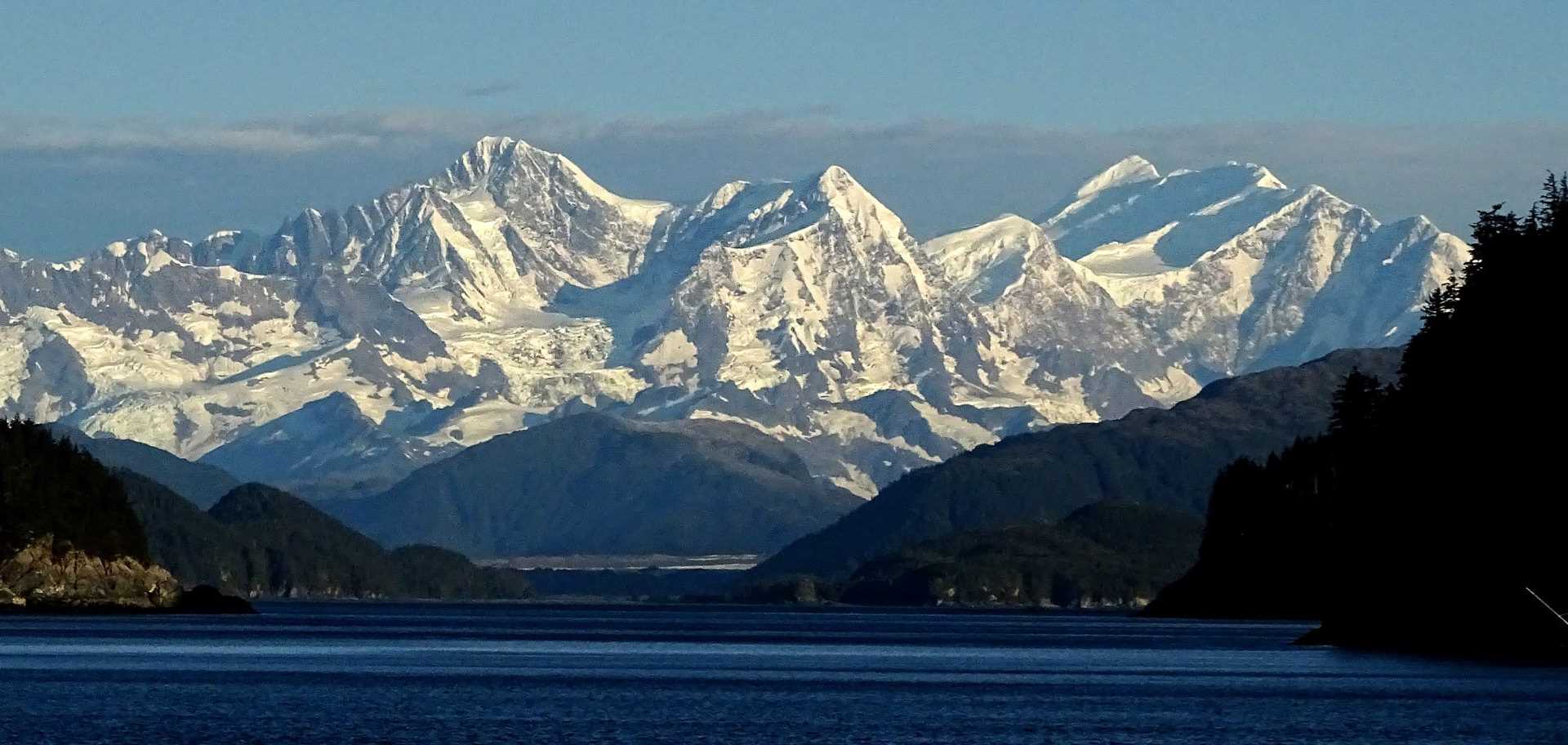I suppose it’s a bit redundant to start every expedition report gushing about how beautiful the sunrise was, so how about describing this one as beyond words! The weather was crystal clear, as the Fairweather Range received morning light on one peak then slowly on another. It was soon illuminated enough to show the incredible detail of mountain ice. The photo in today’s Expedition Report shows the complexity of the scene with a troll fishing boat on the right.
It takes millions of gallons of seawater flowing through narrow channels twice a day to fill and empty the fiords, straits, and bays of the northern half of Southeast Alaska. Tides can change up to 25 feet in a single day at times. Playing in a boat in the middle of that much moving water is a thrill in itself even without the northern sea lions. These pinnipeds grab disoriented salmon and other fish, bring them to the surface, and violently thrash them back and forth until flesh flies through the air, and a mass of hungry gulls grabs the scraps. Sea lions don’t have the type of teeth that can slice off nicely shaped pieces of fish, so they are left with this uncouth and rude way of eating. It sure seems to work for them. It’s appealing for photographers too as they digitally catch a frame full of splashes, flying fish parts, and the teeth and whiskers of sea lions.
On the more gentle side, sea otters were here too, washing their bellies, rolling over and over, scrubbing their fuzzy faces, and curiously watching us while they loafed between bouts of foraging. One had a basket star on his belly, hungrily eating its orange branching arms. Several otters were wrapped in kelp with young ones within their reach, but most were by themselves, appearing to have some destination in mind.
Later in the day we anchored at Fox Creek. Time off the ship was spent kayaking around an island and walking in a young forest that becomes older the farther one goes. The area we were exploring has been rising an inch or so per year for the last 200 years. The massive glacier that once filled Glacier Bay has retreated and has released a huge amount of weight on the Earth’s crust. Like unloading cargo from a freighter, the land has moved upward through this process known as isostatic rebound. We followed impressive brown bear tracks in the mud and came upon a large spruce tree. It had been gouged deeply by bears over the years. Stuck to the bark was bruin hair, a clue that it had also been a place to scratch an itch.
We were soon on our way to Gustavus, where a Ranger and a Cultural Interpreter were picked up for tomorrow’s adventure into Glacier Bay National Park.







